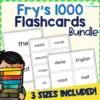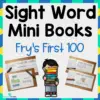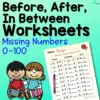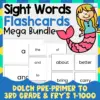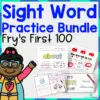Hey parents and educators! Do you struggle to get your preschoolers to focus on worksheets? Don’t worry, we’ve got your back!
Check out these nine opposite worksheets that are both educational and fun for your little ones. Learning opposites has never been easier! Let’s dive in and make learning a breeze!
Great Opposite Worksheets for Preschoolers
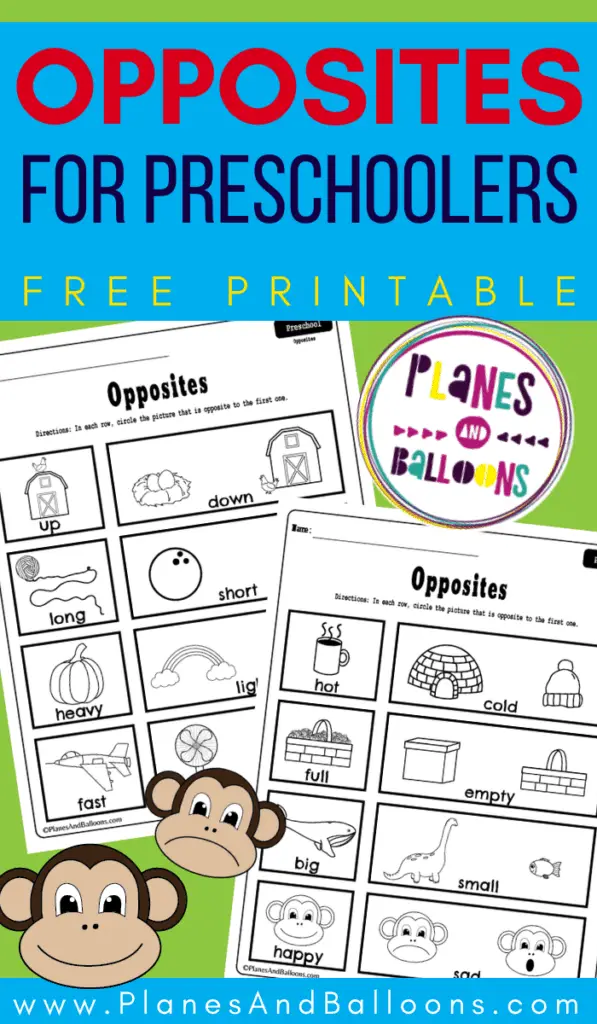
Let’s dive into the world of opposites with the first worksheet – Circle the Opposite Worksheet! As parents and educators, we know that learning opposites is a basic concept taught in preschool. This free printable is perfect for helping your little ones practice eight different words and their opposites.
Using this worksheet is easy – just read the first word in each row and ask your child what the opposite is. If they’re not sure, guide them with more questions or examples to help them understand.
Once they know the opposite, let them circle the picture that represents it. To make the activity even more fun, your child can color in the pictures too! With two pages included in this set of worksheets, your child will have plenty of opportunities to practice and learn.
To learn more about this activity, make sure to visit planesandballoons.com.
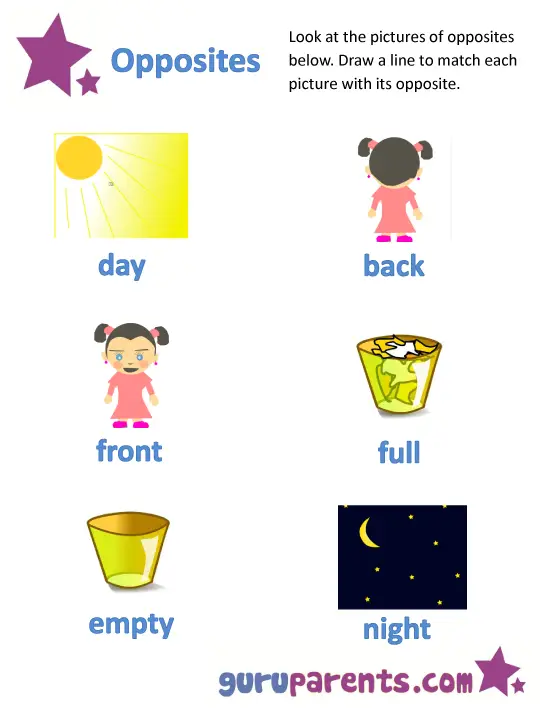
Up next, we have a slightly more advanced Opposites Worksheet – Match the Opposites! As your child becomes more familiar with opposites, they’ll be able to identify and match opposite images by drawing a line between them.
This worksheet is perfect for preschoolers who are ready for a bit of a challenge. The opposites are mismatched, so your child will need to pay attention and think critically to match them up correctly.
Not only is this worksheet great for teaching opposites, but it also helps with hand-eye coordination and fine motor skills as your child draws the line between the matching images.
So, if your little one is ready for a bit of a challenge, download the Match the Opposites worksheet from the end of this article and watch them have fun while learning. This is a great activity to use at home or in the classroom, so be sure to give it a try!
If you want additional details about this activity, don’t forget to explore guruparents.com
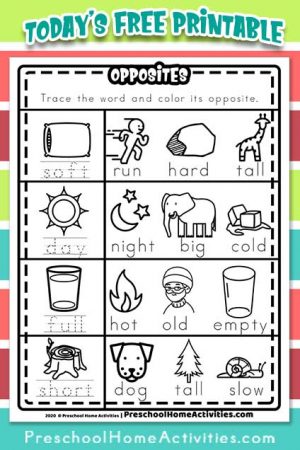
Teaching opposites can be a blast, especially when your preschooler starts to understand the concept. Watching their little minds work and seeing the pride on their faces when they know the answer is priceless.
This next worksheet is a great way to help your child continue their opposite learning journey – Trace and Color Opposites! With this worksheet, your child can trace the main word or have you read it to them, and then color it in its opposite.
This activity is not only educational but also helps with fine motor skills as your child traces and colors. Plus, it’s a fun and creative way to teach opposites and keep your child engaged and excited about learning.
Use it at home or in the classroom, and watch as your child continues to develop their understanding of opposites.
For further information on this activity, be sure to browse preschoolhomeactivities.com.
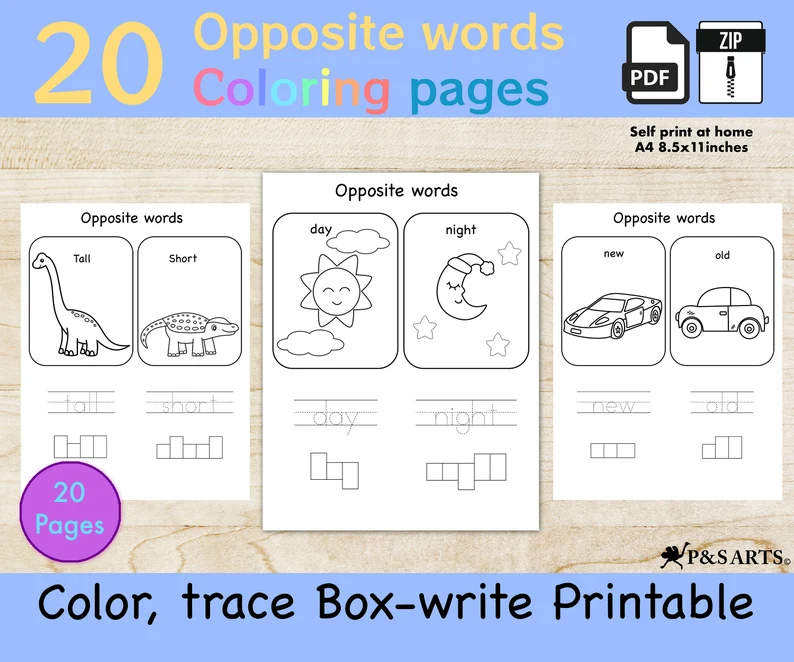
This worksheet is perfect for preschoolers who are ready to take their opposite learning to the next level. With this worksheet, your child will be able to color, trace, and write opposite words, all in one activity.
Start by having your child color in the pictures of the opposite words. Then, they can trace the words to help develop their fine motor skills. Finally, have them write the opposite word themselves to practice their writing skills and reinforce their understanding of opposites.
Not only is this worksheet a fun and interactive way to teach opposites, but it’s also a great way to help your child develop important skills they’ll need in the future.
Your child will love coloring, tracing, and writing their way to a better understanding of opposites!
You can find the printable worksheets here at Sandra Pena’s Etsy Shop.
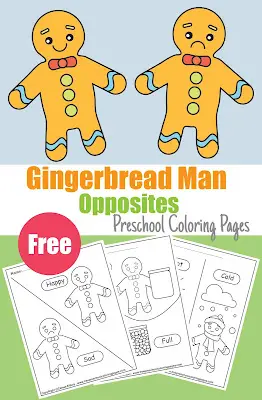
Get ready for some sweet opposite learning with this next worksheet – Gingerbread Man Opposite Color Pages! These free printable coloring pages are a great way to teach preschoolers about opposites and antonyms in a fun and engaging way.
With this activity, kids will practice opposites and learn to differentiate between different words. They’ll have a blast coloring in the gingerbread man and his opposite friend, while also developing their understanding of opposite concepts.
Not only is this activity great for teaching opposites, but it’s also a fun and creative way to keep your child engaged and excited about learning. Plus, coloring is a great way to help develop hand-eye coordination and fine motor skills.
It’s perfect for use at home or in the classroom, and your child will love coloring their way to a better understanding of opposites!
If you’re looking for more information about this activity, freepreschoolcoloringpages.com is the site to visit.
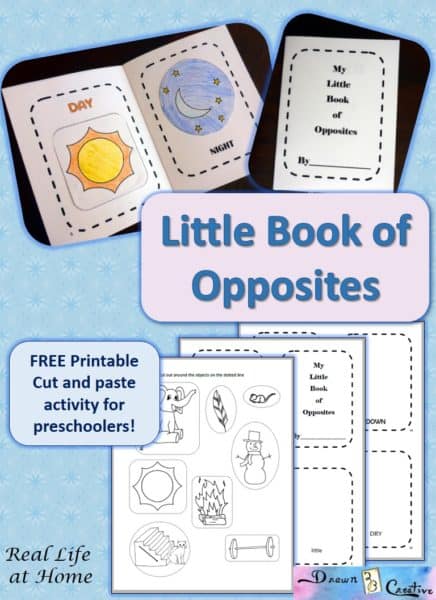
This next worksheet is a fantastic way to help your preschooler develop their coloring and cutting skills, while also learning about opposites. It’s called “My Little Book of Opposites” and it’s a cut-and-paste activity that includes a printable booklet with opposite words written on the pages.
The download also includes separate sheets with images to color, cut out, and paste onto the correct pages. This is a great hands-on activity for kids, as they get to create their little book while also learning about opposites.
To create the book, simply print the first four pages double-sided (flipping on the long side), cut them in half, and stack the pages in order. Then, let your child color and cut out the images and paste them onto the appropriate pages.
This worksheet is an easy and fun activity that you can do at home or in the classroom, and it’s perfect for preschoolers who are just beginning to learn about opposites.
Make sure to visit reallifeathome.com to find out more about this activity.
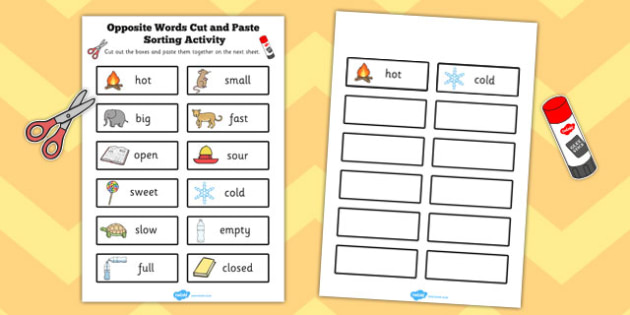
The next worksheet is the Opposite Words Cut and Paste Sorting Activity, an exciting and engaging way for preschoolers to learn about antonyms and practice sorting opposite words.
With this worksheet, your child will need to cut out the images and paste them onto the correct opposite word. To make this activity easier for your child, you can guide them on how to use scissors by holding the paper and showing them how to cut along the lines.
This activity is an excellent opportunity to help your child develop their fine motor skills, as well as their understanding of opposites. It’s also a great way to introduce antonyms to your child by pairing opposite words together.
Download the Opposite Words Cut and Paste Sorting Activity and enjoy an easy and fun activity that you can do with your child at home or in the classroom.
If you need more information about this activity, check out twinkl.jp.
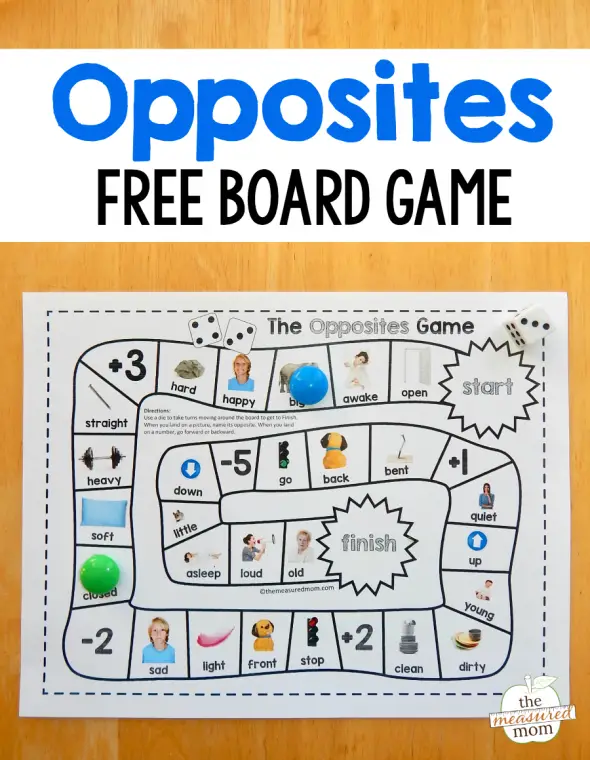
This game is a fantastic tool for teaching preschoolers the concept of opposites. It features real images that will help them associate the word with its opposite.
To play the game, print it in color or grayscale and grab a die, and playing pieces. Take turns rolling the die to move around the board. If you land on a picture, say its name and its opposite, giving your child prompts if needed. For example, “If something isn’t hot, it’s…” or “You can be quiet, or you can be…” If you land on a number, go backward or forward that number of spaces.
You may find that your child thinks of a different opposite than the one pictured, giving you a chance to talk about the different meanings of words. The first player to finish wins! It’s a fun and interactive way for kids to learn and practice their opposites while having a good time.
To obtain additional details about this activity, be sure to visit themeasuredmom.com.
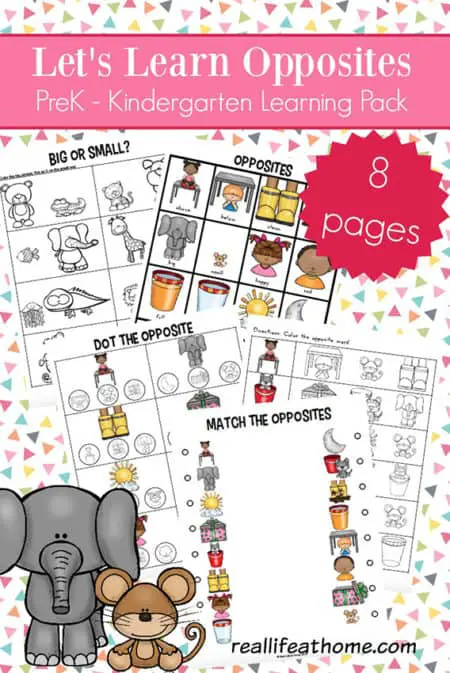
The final worksheet in this collection is the Antonyms Worksheets Packet. This packet is designed for children aged 4-7 years old and contains nine pages of printable activities to help them learn about opposites.
Included in the packet are several different types of activities such as matching cards, drawing lines between opposite pairs, cut and paste matching, finding the opposite to color, and dotting the opposite. The packet also contains three pages that give directions for denoting opposites in different groups, such as hot or cold, big or small, and winter or summer.
These worksheets are perfect for children who are just beginning to learn about antonyms, and they can be used as a fun and engaging way to reinforce this important concept. The packet is available for free download and is a great resource for parents and teachers alike.
For more information about this activity, make sure to explore reallifeathome.com.
Conclusion
Remember, learning should always be enjoyable for children, and these worksheets provide a great way to introduce the concept of opposites while having fun.
Thank you for taking the time to read this article, and I wish you and your little learners a fantastic time exploring the world of opposites!
People Also Ask
Teaching preschoolers about opposites is an important part of their language development. One of the best ways to teach opposites is through hands-on activities and games that make learning fun and engaging. Start by introducing the concept of opposites through simple examples like “up” and “down” or “hot” and “cold”. Use real-life objects and experiences to help your child understand the concept better.
Use visual aids like flashcards, posters, and worksheets to help your child recognize and remember opposite words. Incorporate movement and play into learning by playing games like Simon Says, Red Light Green Light, and musical chairs.
Encourage your child to use opposite words in their everyday conversations and ask them to identify opposites in the world around them. Remember to be patient and repetitive in your teaching, as young children need repeated exposure and practice to fully grasp a new concept. With consistent effort and a positive attitude, your child will be able to confidently identify and use opposite words in no time!
Check out more kids’ activities and resources:


